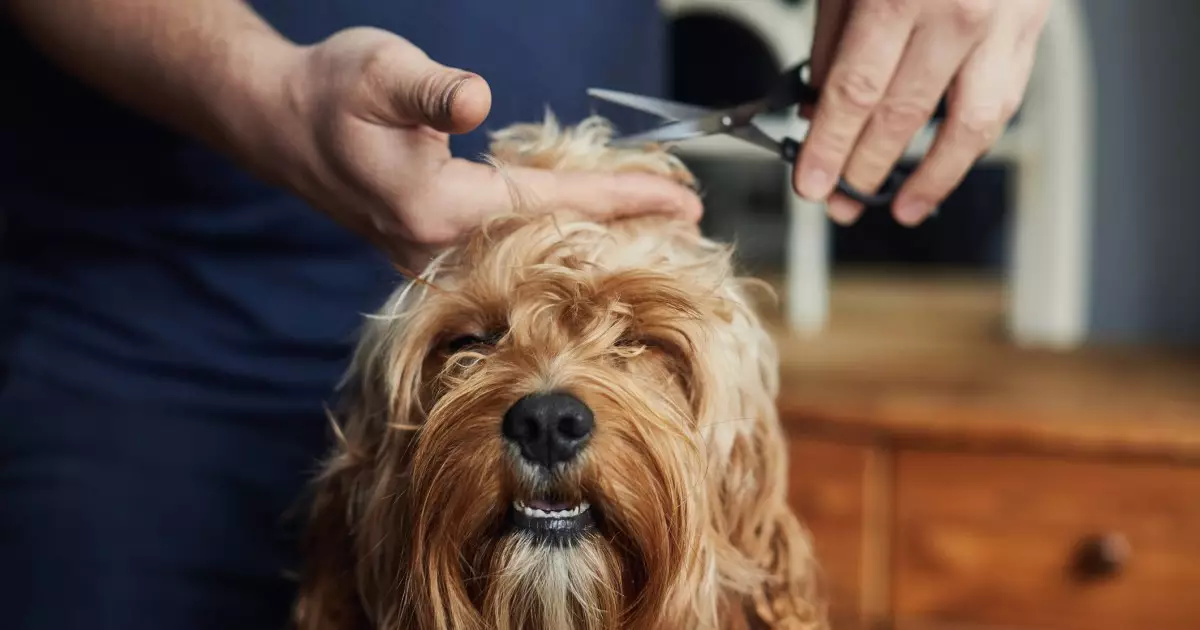Grooming your dog at home might seem like a daunting task, but it doesn’t have to be. Like us, dogs require regular grooming to maintain their hygiene, health, and appearance. Whether you have a fluffy golden retriever or a sleek beagle, the right techniques can turn grooming into a rewarding bonding experience for both of you. In this article, we’ll explore the fundamentals of dog grooming at home, ensuring that you and your furry friend can enjoy the process without unnecessary stress.
One of the first steps in ensuring a successful grooming session is establishing a calm and positive atmosphere. Much like a tense haircut for ourselves, if a dog is anxious, the grooming process can quickly become a challenge. Tonight’s best grooming time is typically after exercise, as your dog will be more relaxed after a walk or play session. Start with short sessions of about five to ten minutes, gradually increasing the duration as your dog becomes more accustomed to being handled.
During this initial phase, ease your dog into the grooming routine by gently petting them all over, including those sensitive areas like ears and paws. Offering praise and small treats throughout the session can create positive associations with the grooming process. This encouragement turns the grooming session from a chore into an enjoyable experience that your dog will look forward to over time.
Every dog has a unique coat type that requires specific grooming tools and techniques. For smooth-coated breeds such as beagles or Doberman Pinschers, weekly grooming is generally sufficient. Using a soft bristle brush initially helps dislodge dirt and dead skin, followed by a firmer bristle brush to remove loose hairs. Finally, a chamois cloth can be used to add shine.
Dogs with short- and thick-coated fur, like Labradors or Huskies, may experience matting, necessitating a slightly different routine. A slicker brush can help detangle stubborn knots, followed by a bristle brush to collect fallen fur. It’s crucial to pay attention to areas prone to matting, such as behind the ears or under the legs.
On the other hand, long-haired breeds like Cocker Spaniels require daily grooming to avoid tangles. Start with a slicker brush to tackle mats, follow up with a bristle brush for a smooth finish, and pay special attention to sensitive areas like their feet and tail. Performing these grooming tasks consistently will help keep your dog’s coat healthy and looking its best.
Bathing your dog can be an arduous task, especially if they have a dislike for water. However, it’s an essential part of grooming. Experts recommend bathing your dog at least every three months, although more active dogs may benefit from more frequent washes. Make sure to use a gentle, dog-friendly shampoo to avoid any skin irritation.
Before you begin, brush your dog to remove any mats or dead hair. Prepare your bathing area with a rubber mat to prevent slips and ensure lukewarm water is ready. Use a handheld showerhead if available to avoid spraying water directly into their ears or eyes. Remember to thoroughly rinse out all the shampoo and check ears for dirt or wax while bathing.
Post-bath care is vital too; many dogs love to roll in grass and dirt soon after getting clean, so keeping them indoors for a little while can prevent extra work. Use towels or a low-heat hair dryer to dry them off gently, ensuring they’re thoroughly dry to prevent any chilling or discomfort.
Nail trimming is another critical aspect of grooming that requires patience and care. Begin by inspecting your dog’s paws for dirt or debris, cleaning them as necessary. Use sharp, guillotine-style nail trimmers to carefully trim the tip of each nail. Be cautious to avoid the quick, which can cause bleeding if cut. It’s wise to have styptic powder on hand just in case.
For breeds like Pugs or Shar-Pei that have unique grooming needs, pay special attention to their skin folds to prevent dirt and bacteria buildup. Use damp cotton to clean these areas regularly and keep them dry.
Similarly, for long-eared breeds, check their ears weekly for any buildup of wax or dirt. Using a cotton ball with a vet-approved solution can help keep them clean and healthy.
Grooming is more than just maintaining your dog’s appearance; it’s an opportunity to bond with your pet. Treat each session as an enjoyable experience, infused with positive reinforcement through gentle touch, treats, and praise. Regular grooming not only keeps your dog looking great but also contributes to their overall health by preventing matting, skin irritations, and more serious hygiene issues.
With practice and patience, you’ll find that grooming at home can be both manageable and enjoyable. By utilizing the right techniques and establishing a routine, you’ll strengthen the bond you share with your canine companion, making every grooming session a cherished experience.


Leave a Reply